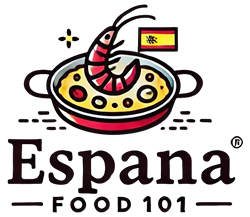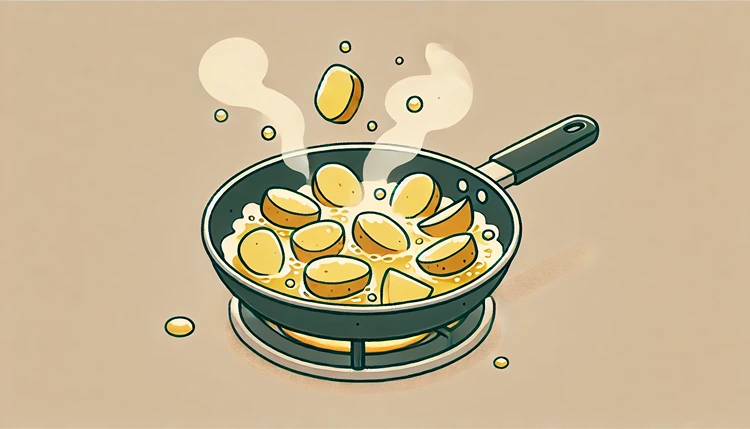Patatas Bravas is a quintessential Spanish tapas dish that has won hearts worldwide. The crispy, fried potatoes served with a spicy tomato-based sauce offer a delightful contrast of textures and flavors. But what makes Patatas Bravas stand out from other fried potato dishes? It’s all in the sauce and the unique ingredients that give it that distinctive Spanish flair.
Many variations of this dish exist, depending on the region, but they all share the same base ingredients: potatoes, sauce, and seasonings. However, it’s the addition of certain local ingredients that really elevates the dish to iconic status.
Is the Key to Patatas Bravas in the Potatoes?
The first thing to note about Patatas Bravas is the potato itself. Spaniards take their potatoes seriously, and not just any kind will do. The potatoes are traditionally cut into irregular shapes and fried to perfection. But what kind of potatoes are best?
Helpful Hint:
Opt for starchy potatoes like Russets or local varieties such as Kennebec, known for their ability to achieve a crisp exterior while staying soft inside. Avoid waxy potatoes, which don’t fry as well.
While the potatoes are essential, they’re just the foundation of the dish. What really sets Patatas Bravas apart is the sauce.
What Goes into the Bravas Sauce?
The sauce is where the magic happens. The base of most traditional Bravas sauces is tomato, but what makes this sauce unique are the spices and techniques used. Here’s a breakdown of some of the ingredients that give Bravas sauce its famous kick.
Spanish Paprika (Pimentón)
Pimentón, or Spanish paprika, is one of the key ingredients in the sauce. This smoky, slightly sweet spice comes in a few varieties: sweet (pimentón dulce), spicy (pimentón picante), and smoked (pimentón de la Vera). It provides that signature smoky flavor you can’t find with regular paprika.
Cayenne Pepper
Though pimentón adds flavor, it’s cayenne pepper that brings the heat. Depending on the recipe, cayenne is added to taste, giving the sauce its signature spiciness. In regions like Madrid, the heat level is cranked up to make the sauce fiery, while other areas might use it more sparingly.
Sherry Vinegar
Another often overlooked ingredient in the Bravas sauce is sherry vinegar. This vinegar is made from sherry wine and adds a touch of acidity that balances out the richness of the fried potatoes. Its sharpness cuts through the fat, giving the dish a more rounded flavor.
Garlic
Garlic is a staple in many Spanish recipes, and Patatas Bravas is no exception. Finely minced or crushed garlic adds a depth of flavor to the sauce that makes it irresistible. The key is to sauté it until fragrant, being careful not to let it burn.
Is There More to the Sauce Than Tomato?
While many associate Bravas sauce with a tomato base, traditional Spanish recipes vary. In some regions, the sauce is tomato-less, relying on a blend of olive oil, flour, and pimentón to create a velvety, flavorful topping. These regional variations can surprise even the most seasoned Spanish food lovers.
Olive Oil: The Spanish Secret
Olive oil is at the heart of Spanish cuisine, and Patatas Bravas is no different. The sauce, whether tomato-based or not, often starts with good quality extra virgin olive oil. This helps to emulsify the sauce and give it a rich, glossy finish.
Helpful Hint:
For the best results, use Spanish extra virgin olive oil. Its fruity, slightly peppery taste elevates the sauce, making it stand out from versions made with regular vegetable oils.
Regional Variations: How Does the Sauce Change Across Spain?
Spain is known for its regional diversity in cooking, and Patatas Bravas is no exception. In Madrid, the sauce tends to be spicier, with more cayenne pepper and a thicker consistency. In Barcelona, however, you’ll often find a milder version with an aioli twist.
Madrid’s Bold and Spicy Version
Madrid’s version of Patatas Bravas is fiery, and the sauce is typically thicker, clinging to each bite of potato. The base is almost always tomato-based, with pimentón and cayenne pepper providing plenty of heat. It’s meant to wake up your taste buds and leave a lasting impression.
Barcelona’s Aioli Variation
In Catalonia, particularly in Barcelona, Patatas Bravas often come with a garlic aioli sauce alongside, or sometimes in place of, the traditional spicy sauce. Aioli, a creamy garlic mayonnaise, tempers the heat and adds richness, giving the dish a different texture and flavor balance.
Regional Variations of Patatas Bravas in Spain
| Region | Sauce Base | Heat Level | Common Additions |
|---|---|---|---|
| Madrid | Tomato-based with pimentón and cayenne | High | Extra garlic, thick sauce consistency |
| Catalonia | Aioli or mayonnaise-based with mild spices | Low | Aioli alongside tomato sauce, parsley garnish |
| Basque Country | Tomato with a dash of vinegar | Medium | More vinegar, slightly tangy sauce |
| Andalusia | Tomato with additional herbs like thyme | Medium | Fresh herbs like thyme and rosemary, occasional use of saffron |
What Herbs and Spices Elevate the Dish?
Though the primary ingredients of Patatas Bravas are simple, it’s the herbs and spices that bring the dish to life. Here’s a look at some of the more unique seasonings that enhance the dish.
Thyme and Rosemary
Thyme and rosemary are frequently added to the frying oil or sprinkled over the potatoes after frying. These herbs infuse the dish with a fresh, aromatic quality, adding complexity to the otherwise simple ingredients.
Saffron
Though not a common ingredient in every version of Patatas Bravas, saffron can occasionally be found in more upscale or regional variations of the dish. This expensive spice lends a subtle floral note and a beautiful golden hue, making the dish visually striking and luxurious.
Parsley for Garnish
Freshly chopped parsley is often used as a garnish to provide a burst of color and a hint of brightness. While it might seem like a simple addition, the fresh herb brings a necessary balance to the rich and spicy flavors.
What Makes Patatas Bravas Truly Unique?
It’s the combination of simplicity and bold flavor that makes Patatas Bravas stand out. The crispy, perfectly fried potatoes paired with a sauce that’s simultaneously spicy, smoky, and rich creates a dish that is both comforting and exciting.
The History Behind Patatas Bravas: How Did It Become a Spanish Classic?
While Patatas Bravas is now a beloved dish across Spain, its origins are somewhat mysterious. Some food historians suggest that the dish was invented in Madrid in the mid-20th century. Initially, it was a humble tavern snack, designed to pair perfectly with a glass of wine or a cold beer. Over time, it spread across the country, with each region adding its own twist to the recipe.
Madrid: The Birthplace of Patatas Bravas
Many believe that Patatas Bravas was born in Madrid, where the dish became synonymous with the city’s lively tapas culture. In its early days, Patatas Bravas was served with a thick, spicy tomato sauce that had just enough heat to leave your mouth tingling. This fiery version is still popular in the capital today.
Regional Expansion: How Patatas Bravas Evolved Across Spain
As the dish gained popularity, it spread to other regions of Spain, each adding their unique local ingredients and preferences. In the northern regions like the Basque Country, you’ll find a milder version, often served with aioli. Meanwhile, in southern Spain, the dish may include additional spices or herbs, giving it a more complex flavor profile.
How to Make Authentic Patatas Bravas at Home
If you’re looking to recreate this iconic Spanish dish at home, the good news is that it’s relatively simple to prepare. With a few key ingredients and some technique, you can enjoy a taste of Spain in your own kitchen. Here’s how to make an authentic version of Patatas Bravas that captures the unique flavors of Spain.
Step 1: Choosing the Right Potatoes
As mentioned earlier, starchy potatoes like Russets or local Spanish varieties like Kennebec are ideal for Patatas Bravas. These potatoes will give you that perfect crispy exterior with a soft, fluffy interior. Begin by peeling the potatoes and cutting them into irregular chunks. This uneven shape ensures that each piece fries evenly and develops a satisfying crunch.
Step 2: Frying the Potatoes
To achieve the perfect texture, it’s important to fry the potatoes twice. The first fry should be at a lower temperature (around 160°C or 320°F) to cook them through. After the initial fry, remove the potatoes from the oil and allow them to cool. The second fry should be at a higher temperature (around 190°C or 375°F) to create a golden, crispy exterior.
Step 3: Making the Bravas Sauce
While the potatoes are cooling, you can prepare the sauce. Start by heating extra virgin olive oil in a pan and sautéing minced garlic until fragrant. Add pimentón (Spanish paprika), a pinch of cayenne pepper, and a splash of sherry vinegar. Stir in tomato puree or crushed tomatoes, and let the sauce simmer until thickened. For a smooth texture, you can blend the sauce after cooking.
Helpful Hint:
If you prefer a creamier sauce, try adding a spoonful of mayonnaise or aioli at the end. This is especially popular in Catalonia, where Patatas Bravas are often served with both tomato sauce and aioli.
Step 4: Combining the Dish
Once your potatoes are fried to a crisp and the sauce is ready, it’s time to bring everything together. Arrange the potatoes on a serving dish and generously drizzle the sauce over the top. If you’re feeling fancy, you can also garnish the dish with a sprinkle of fresh parsley or a dash of extra pimentón for added flavor.
What Makes Patatas Bravas a Must-Try Dish?
Whether you’re enjoying Patatas Bravas in a bustling Madrid bar or making it at home, the dish offers a perfect balance of flavors and textures. The crispy potatoes and the tangy, spicy sauce are a match made in culinary heaven. But beyond the taste, Patatas Bravas represents the essence of Spanish tapas culture — simple, social, and always delicious.
Patatas Bravas: More Than Just a Snack
While it may seem like a humble dish, Patatas Bravas is more than just fried potatoes with sauce. It’s a representation of Spanish hospitality and the art of making simple ingredients shine. Whether served as an appetizer or as part of a larger tapas spread, Patatas Bravas has a way of bringing people together to enjoy good food and good company.
Are There Any Nutritional Benefits to Patatas Bravas?
While Patatas Bravas isn’t exactly health food, it does offer some nutritional benefits, especially if you use high-quality ingredients. Potatoes are a good source of vitamins and minerals, including vitamin C and potassium. The olive oil used in the sauce and for frying provides healthy fats, which are beneficial for heart health.
How to Make Patatas Bravas Healthier
If you’re looking to make a lighter version of Patatas Bravas, there are a few tweaks you can make. Instead of deep-frying the potatoes, try roasting them in the oven with a drizzle of olive oil. You can also reduce the amount of sauce or opt for a yogurt-based dip instead of the traditional tomato sauce.
Stats:
According to a recent study, using olive oil in cooking can reduce the risk of heart disease by up to 30% when compared to using butter or other animal fats.
Why Patatas Bravas Is a Must-Have on Any Tapas Menu
No trip to Spain is complete without trying Patatas Bravas. The dish is a staple on tapas menus across the country, and for good reason. It’s affordable, widely available, and pairs well with almost any other tapas dish. Whether you’re sipping on a glass of Spanish wine or enjoying a cold cerveza, Patatas Bravas is the perfect accompaniment.
Pairing Patatas Bravas with Other Tapas
Patatas Bravas is often served alongside other tapas favorites like jamón ibérico, calamari, or gambas al ajillo. The spicy sauce provides a nice contrast to the richness of these dishes, creating a well-balanced meal.
FAQs
Wrapping Up
Patatas Bravas, with its crispy potatoes and bold, flavorful sauce, is a true representation of Spain’s rich culinary traditions. From the essential Spanish paprika to the use of sherry vinegar, the unique ingredients make this dish stand out on any tapas menu. Whether you prefer the fiery version from Madrid or a milder Catalonian variation with aioli, Patatas Bravas continues to be a crowd favorite.
Making Patatas Bravas at home allows you to experience a taste of Spain with simple yet high-quality ingredients. The combination of crispy, golden potatoes with a spicy, tangy sauce is bound to leave an impression. If you’re a fan of Spanish cuisine or just love exploring new dishes, this recipe offers a great starting point. Now that you have all the details, why not give it a try and see how the unique flavors of Spain come together on your plate?







